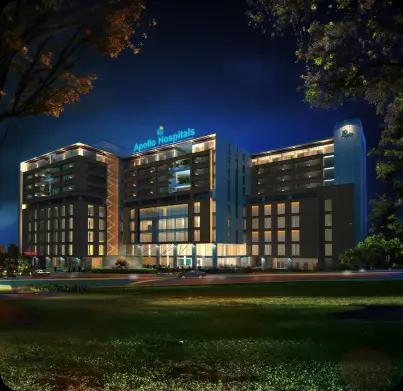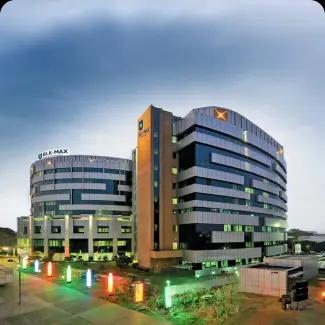
Microvascular Decompression (MVD)
Microvascular decompression is a surgical procedure for treating intensely painful or spasming facial nerves when medications haven't brought relief. It is a procedure to relieve the symptoms (pain, muscle twitching) caused by compression of a nerve by an artery or vein. It provides the longest duration of relief from trigeminal neuralgia pain and the lowest rate of permanent numbness of the face after surgery.
Free Pick up and Drop
No Cost EMI
Post Surgery Care
Microvascular decompression is a surgical procedure for treating intensely painful or spasming facial nerves when medications haven't brought relief. It is a procedure to relieve the symptoms (pain, muscle twitching) caused by compression of a nerve by an artery or vein. It provides the longest duration of relief from trigeminal neuralgia pain and the lowest rate of permanent numbness of the face after surgery.
Symptoms Of Microvascular Decompression (MVD)
Symptoms
Microvascular decompression (MVD) is a surgical procedure used to relieve pressure on cranial nerves, typically the trigeminal or facial nerves, that are compressed by blood vessels.
Types of conditions
There are two main types of Microvascular Decompression (MVD)
Conventional treatment
Interventional treatment
Conventional treatment
- The mainstay of managing trigeminal neuralgia is antiepileptic drugs.
- Carbamazepine has been a gold standard for the management of this condition.
- Other medications that can be tried are gabapentin, pregabalin, and baclofen.
Microvascular decompression (MVD) is a surgical procedure used to relieve pressure on cranial nerves, typically the trigeminal or facial nerves, that are compressed by blood vessels. Symptoms associated with conditions that may require MVD, such as trigeminal neuralgia or hemifacial spasm, can vary, but here are some common symptoms:
-
Severe Facial Pain: Trigeminal neuralgia is characterized by intense, stabbing, or electric shock-like pain in the face, typically on one side. The pain may be triggered by activities such as chewing, speaking, or touching the face.
-
Facial Twitching or Spasms: Hemifacial spasm causes involuntary muscle contractions on one side of the face, leading to twitching or spasms that can be constant or intermittent.
-
Sensitivity to Touch: Patients may experience increased sensitivity or pain in response to even light touch or sensation in the affected area of the face.
-
Episodes of Pain: The pain or spasms may occur in episodes or paroxysms, with periods of relative relief in between.
-
Impact on Daily Activities: The severity of symptoms can significantly affect daily activities such as eating, talking, and social interactions, leading to decreased quality of life.
DIAGNOSIS
-Special MRI (“Trigeminal neuralgia protocol MRI”) - This MRI refers to a specialized set of imaging techniques and sequences designed to evaluate the trigeminal nerve and related structures in cases of suspected trigeminal neuralgia. This protocol aims to capture detailed images that can help identify potential causes of trigeminal neuralgia, such as vascular compression or structural abnormalities affecting the best trigeminal nerve.
-
CT Scan - A CT scan, or computed tomography scan, is a medical imaging procedure that uses X-rays and computer processing to generate detailed cross-sectional images of the body's internal structures.
-
Hearing test (Audiogram) - Also known as an audiometric evaluation, it is a procedure used to assess a person's ability to hear sounds at different frequencies and volumes. It involves listening to various tones and sounds through headphones and responding when the sounds are heard. This test helps determine the degree and type of hearing loss a person may have.
-
Blood work and possibly an EKG
Baseline Brain Wave Monitoring - Baseline brain wave monitoring refers to the initial recording of a person's brain wave activity using electroencephalography (EEG) to establish a reference or baseline pattern of normal brain function. This baseline is used for comparison in future EEG recordings to detect any changes or abnormalities that may indicate neurological conditions or changes in brain activity.
- Preoperative Physical Evaluation
RISK FACTORS
- Infection
- Hearing loss, facial numbness, and/or facial weakness (usually temporary, rarely permanent)
- Spinal fluid leak
- Difficulty with speech or swallowing
- Stroke or haemorrhage (very rare)
PREPARING FOR MVD SURGERY
Before surgery
-
You must always follow the instructions of your MVD surgery team precisely.
-
To start, you will review and sign the necessary consent forms and paperwork. These documents are meant to confirm and inform you and your surgeon about your medical history and certain understandings. There may be pre-surgical tests several days before surgery.
-
Your primary care physician will talk with you about any dietary concerns and what medications you need to stop taking. She will make sure you’re cleared for treatment of trigeminal neuralgia.
-
You will stop taking any NSAIDs (naproxen, ibuprofen, etc.) and blood thinners (aspirin, Plavix, Coumadin, etc.) beforehand.
During surgery
-
After processing for admittance, you will follow a few steps to a procedure that generally takes two to three hours.
-
Administration of anaesthesia and connecting small recording and stimulating wires to the brain to monitor brain activities in real-time.
-
Craniectomy
-
Exposing the nerve
-
Inserting a sponge and closing.
After surgery
After monitoring you overnight, you’ll stay until your activity levels are satisfactory. Usually one to two days.
RESTRICTIONS
Restrictions during the first few weeks after MVD may include:
- Lifting nothing heavier than five pounds.
- No housework, sex, yard work or other strenuous activity.
- No alcohol.
- No nicotine products, including vaping.
- No driving or air travel.
AFTERCARE
Aftercare may include:
- Gentle washing with mild baby shampoo. Pat drying.
- No submerging in a tub, pool or bath for 2 weeks after surgery.
- No lotion or ointments, including hair-coloring products for 2 weeks after surgery.
RECOVERY
-
After surgery, you can expect to stay in the hospital one to three days recovering while your doctor monitors you and manages any pain, dizziness, or other symptoms you may be experiencing.
-
You will be taken to the recovery room where vital signs are monitored as you awake from anesthesia. Next, you will be transferred to the intensive care unit (ICU) for close observation overnight.
-
As MVD is a major surgery, you can expect to have some pain at the incision site and headache postoperatively.
-
Pain medicines are used for the first several days, and your doctor may advise that you may continue your pre-operative medical regimen for nerve pain.
-
Many patients can return to work within two weeks (longer if they have physically demanding jobs) and most say they are completely recovered in about two months. For some people, it takes longer – many people report feeling fatigued for longer than they expected
Your journey to good health begins here

Accredited Hospitals
Nationally accredited hospitals for high-quality care

Multi-language Support
Convey your needs in the language you're most comfortable in

Travel Booking Assistance
Seamless booking assistance for your healthcare journey

Personalised Treatment Plans
A treatment journey tailored to all your preferences and needs

Unparalleled Hospitality
Experience exceptional hospitality during your stay

Easy Medical Visa Approvals
Dedicated assistance for medical visa requirements
Plan your healthcare journey with Karetrip!
India’s Best Hospitals are Partnered With Karetrip
Access World-Class facilities from top Hospitals across India
Consult with India’s most experienced doctors
Experience premium care from India’s leading specialists
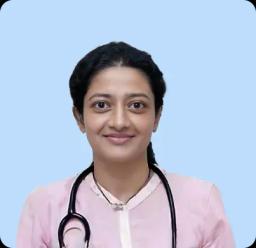
Dr. Sagari Gullapalli
Neurologist
7+ Years Of Experience

Dr. Venkata Swamy Pasupula
Neurologist
24+ Years Of Experience

Dr. Neetu Ramrakhiani
Neurologist
21+ Years Of Experience
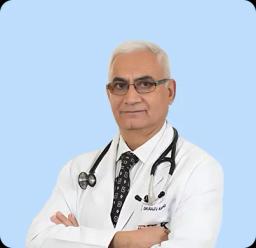
Dr. Rajiv Anand
Neurologist
37+ Years Of Experience
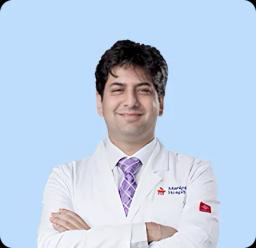
Dr. Abhinav Raina
Neurologist
38+ Years Of Experience

Dr. Mohit Bhatt
Neurologist
34+ Years Of Experience
Cost Estimation
Learn about the expenses involved in the procedure and what factors affect them.

The cost of Microvascular Decompression (MVD) surgery in India varies depending on several factors, including the hospital, the surgeon's fee, the complexity of the procedure, and the patient's medical condition. However, on average, the cost of MVD surgery in India is around 40-70% lower than in Western countries.
The cost for Indian patients is between INR 3-4 lakh, depending on the hospital and the facility. The cost of MVD surgery in India may be slightly higher in private hospitals compared to government-run hospitals.
The average cost of the Microvascular Decompression (MVD) in India is around ₹2,50,000 to ₹3,00,000.

₹3,00,000
High Cost
₹2,75,000
Average Cost
₹2,50,000
Low Cost
The LIST of AVERAGE COST of the Microvascular Decompression (MVD) across TOP 6 cities in India in Indian Rupee (INR) is as follows :
City
Lowest Cost
Average Cost
Highest Cost
Ahmedabad
₹2,80,000
₹2,75,000
₹3,00,000
Mumbai
₹2,50,500
₹2,70,500
₹3,00,000
Delhi
₹2,50,500
₹2,70,500
₹3,00,000
Bangalore
₹2,50,500
₹2,70,000
₹3,00,000
Kochi
₹2,50,000
₹3,00,000
₹4,00,000
Chennai
₹2,80,000
₹2,70,000
₹3,00,000
Commonly Asked Questions
How successful is microvascular decompression surgery?
MVD has a long-term success rate of approximately 80% as a stand-alone treatment.
What to expect after microvascular decompression?
Many patients can return to work within two weeks (longer if they have physically demanding jobs) and most say they are completely recovered in about two months. For some people, it takes longer – many people report feeling fatigued for longer than they expected.
How risky is MVD surgery?
MVD is a safe operation, and life-threatening complications accompanying MVD are rare, but require attention.
Is MVD surgery permanent?
Microvascular decompression tends to provide fairly long-lasting, but not permanent, pain relief.
How do you sleep after MVD surgery?
Sleep with your head elevated and apply ice 3-4 times per day for 15-20 minutes to help reduce pain and swelling.

Do you still have a query?


"I had a successful surgery at Fortis Escorts Hospital, and it was all thanks to Karetrip's help in finding the right hospital for me. The entire process was smooth and stress-free, with Karetrip handling all the arrangements and answering any questions I had. The medical team at the hospital was outstanding, and the facilities were top-notch. I highly recommend Karetrip to anyone looking for a tension-free healthcare experience."
Read MoreFatima
Chattogram


"Thanks to Karetrip, I got connected with MAX Hospital in New Delhi. The team guided me through every step – from finding the right doctor to handling travel and visas. They made a daunting process feel like a breeze. The care I received at MAX Hospital was outstanding, and I can't thank Karetrip enough for making it possible. They truly put patients first and go the extra mile to ensure a smooth healthcare journey. I'm grateful beyond words!"
Read MoreHasan
Dhaka


"At first, I was unsure about having a medical procedure done in a foreign country. However, Karetrip's team at Indraprastha Apollo Hospital made me feel much better. The hospital was very clean, modern, and had everything they needed to help me. The staff were very kind and did everything they could to make me feel comfortable. I'm really happy with how my treatment turned out, and I appreciate Karetrip for making it easy and stress-free."
Read MoreImran
Sylhet
 Google Reviews4.9/5
Google Reviews4.9/5




I had a successful surgery at Fortis Escorts Hospital, and it was all thanks to Karetrip's help in finding the right hospital for me. The entire process was smooth and stress-free, with Karetrip handling all the arrangements and answering any questions I had. The medical team at the hospital was outstanding, and the facilities were top-notch. I highly recommend Karetrip to anyone looking for a tension-free healthcare experience.
Fatima
Chattogram
 Google Reviews4.9/5
Google Reviews4.9/5









